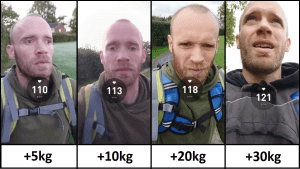I was recently asked whether rucking was a good form of exercise. Rather than simply read up on it, I decided to try it out for myself. Here’s what I found.
Rucking
Rucking is the technical term for walking with a weighted backpack, and rose in popularity around 2015. It has its origins in the army, where soldiers march with a heavy backpack for miles at a time. While they might use packs weighing up to 40kg, for the average person a good starting point might be an extra 5 to 10kg.
If you’re serious about rucking you’ll want to invest in some suitable gear. A decent backpack that doesn’t cause shoulder or back discomfort while walking, and potentially a rucking plate. A rucking plate is a specially designed weight that can be placed in a backpack and still allow room for other things. The weight is placed so that it sits snugly against your back in order to minimise stress on your spine. Another suitable alternative is to buy a weighted vest.
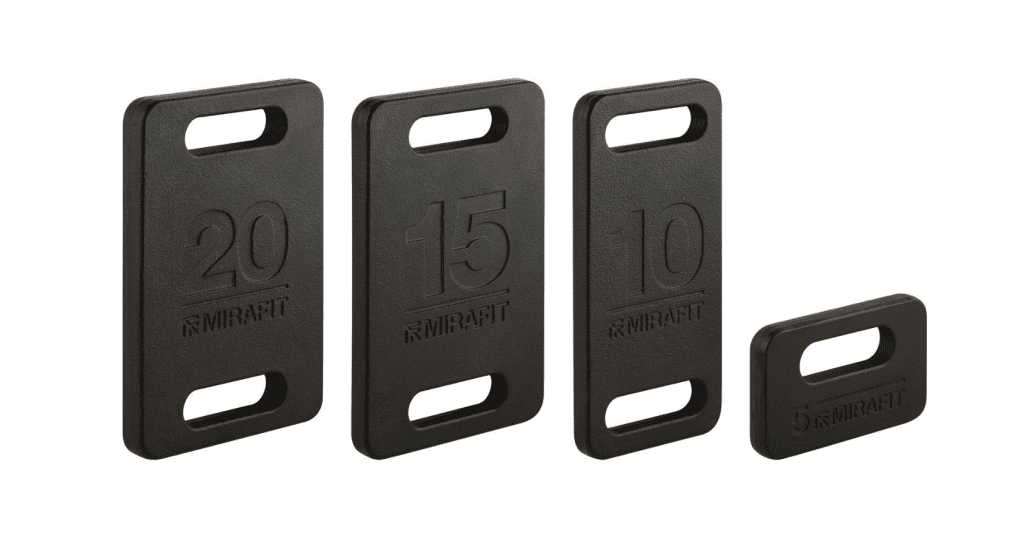
Calories Burned Walking
Since the goal of walking with a weighted backpack is usually fat loss, it makes sense to crunch the numbers. You’ll need to measure everything in relation to your baseline. That is, how many calories you typically burn walking e.g. a mile, and that mainly depends on three things:
- Your weight
- Your height
- Your walking speed
As you can see, two of those factors can be modified to burn more calories: walking speed, and weight. As an example, let’s take a male of average height 178cm (5’9), weight 85kg (188lbs) and walking speed 4.5km/h (2.8mph).
The first step is to use a BMR calculator to calculate how many calories are burned at rest. This is known as your Basal Metabolic Rate.
- Using my age (35) and the average male height and weight, the calculator gives a BMR of 1793 calories/day
- Taking the same age and entering information for the average female (164cm, 72kg) gives a BMR of 1409 calories/day
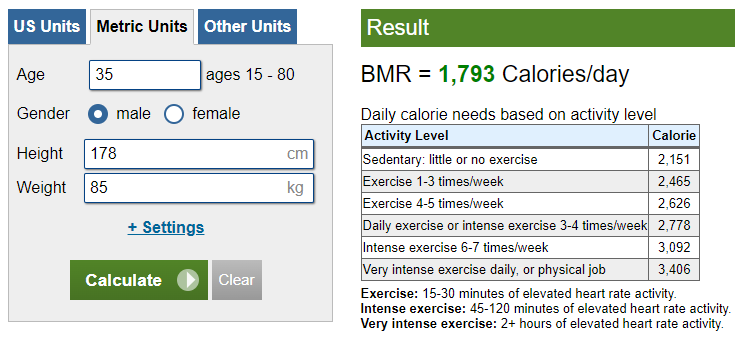
The next step is to find the MET value, which stands for Metabolic Equivalent Task. There are calculations for how many more calories are burned doing an activity compared to sitting (MET = 1). Here’s a few walking speeds with their respective MET values:
- Walking 2.5mph (4km/h): MET = 3.0
- Walking 3.0mph (4.8km/h): MET = 3.5
- Brisk Walking 3.5mph (5.6km/h): MET = 4.3
- Very Brisk Walking 4.0mph (6.4km/h): MET = 5.0
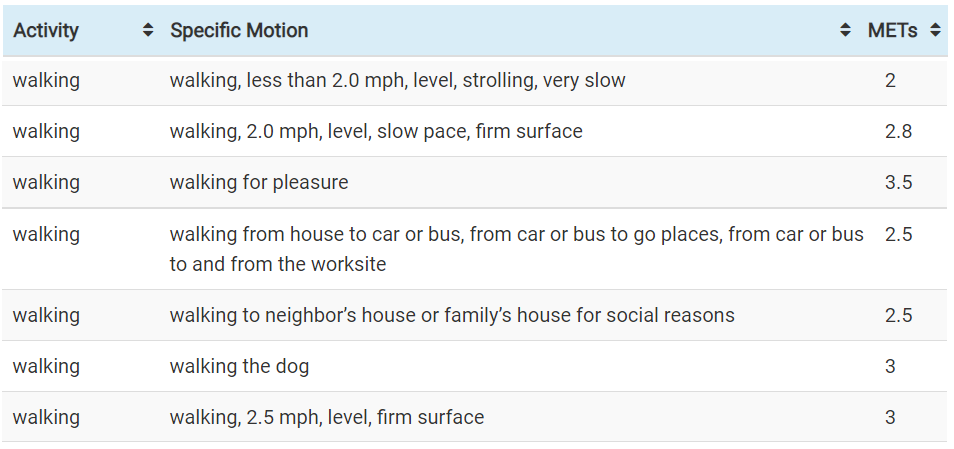
For simplicity we can select 2.5mph and a MET value of 3.0. The value of 3.0 means that you burn three times as many calories walking 2.5mph as you do when sitting.
Now all you need to know is the duration of the activity. Again to keep the example clear, we’ll say the walk is exactly one hour long. We’ll need to take the calories burned in a day (24 hours), divide it by 24 (to get one hour) and multiply it by the MET value of walking 2.5mph (x3).
- Male example, 85kg, 178cm, walking 2.5mph would burn (1793 / 24) * 3 = 224 calories an hour
- Female example, 72kg, 164cm, walking 2.5mph would burn (1409 / 24) * 3 = 176 calories an hour
Calories Burned Rucking
Now that we’ve calculated the calories burned walking, we can dig into the research to see how many more calories we might burn with a weighted backpack.
| Study | Subjects | Load | Increased Kcal burned |
| Huang & Kuo (2014) [1] | 8 | +30% | +40% |
| Grenier et al. (2012) [2] | 10 | +27% | +25% |
| Kravitz (2013) [3] | 13 | +15% | +12% |
| Chatterjee et al. (2018) [4] | 8 | +50% | +28% |
| Schertzer & Riemer (2014) [5] | 8 | +29% | +27% |
While there’s some individual variation, there’s quite good alignment around a 1:1 relationship between additional load and calorie burn. If you were carrying 15% extra weight you might expect to burn 15% more calories than usual. Referring back to the examples, the 85kg male would carry an additional 12.75kg and burn 258 calories an hour (previously 224). The 72kg female would carry 10.8kg in a backpack and burn 202 calories an hour (previously 176).
My Results
Using the same method of starting with my BMR and then using the MET value for my walking speed I obtain a personal value of 293 calories an hour. This is considered brisk walking at 3.5mph and is assuming no additional weight. From there I can then increase my calorie burn by the same percentage as the additional load I carry. The result is the line in blue.
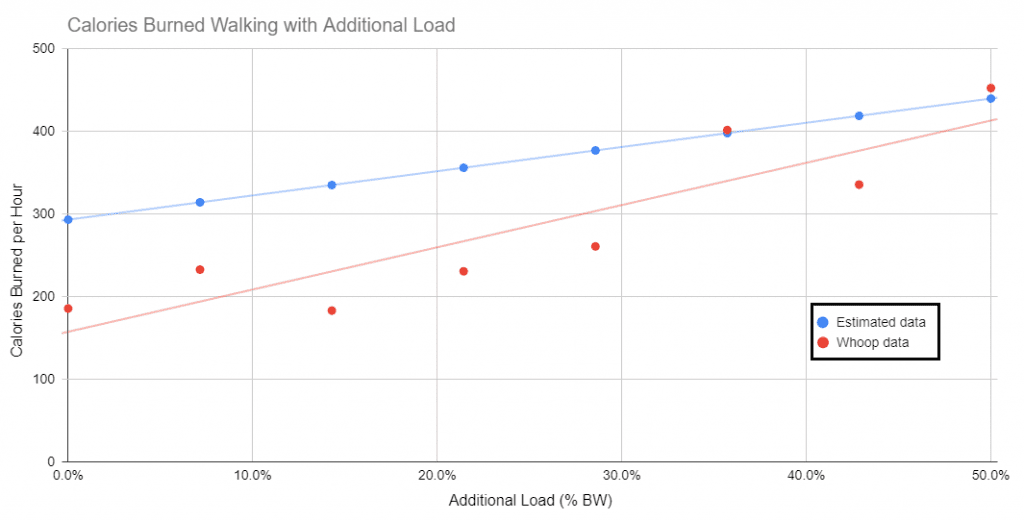
For my actual results I used a Whoop strap*. That mainly relies on my heart rate data and knowledge of my bodyweight to calculate exertion and therefore the increase in calorie burn. You might notice that two of the final three data points are above the line of best fit. Removing those would likely see a similar calorie increase per % bodyweight as the blue line. Another way to view this graph is that Whoop is underestimating my calorie burn at lower intensity levels.
*the link contains my referral code for 1 month free membership
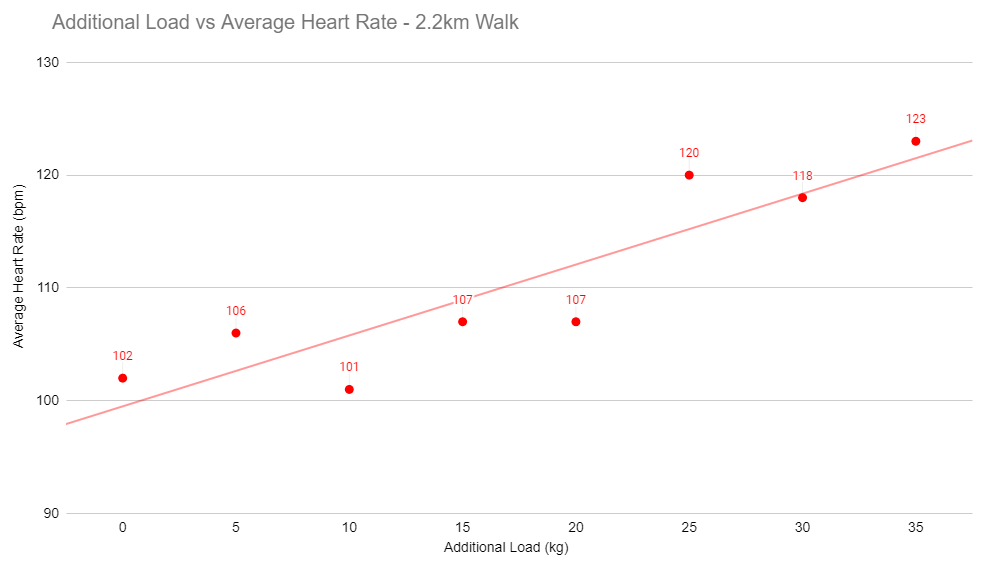
One other metric I was tracking was average heart rate. For this I’ve switched the x-axis back to additional weight in kg for clarity. This aligns with my perception that there was a noticeable increase in effort levels when my weighted backpack was 25kg or higher.
Conclusions
With the superior method for measuring calorie expenditure in research papers I’d be more confident assuming that calorie burn increases in line with additional weight. Therefore, if you were to carry 10% of your bodyweight in a weighted backpack, you can expect calorie burn to increase by around 10% as well. Some other factors to consider:
- Recommendations for beginners are to select a weight no more than 10% of your bodyweight, and to gradually build up to 15% or higher
- If you’re interested in fat loss, you can also expect a 10% increase in calorie burn simply by walking 10% faster
- Injuries are more common as the weight of the backpack increases
- Position of the weight on your back is as important as total weight
- My own experience involved back and knee pain around 20-25kg and spraining the arch of my foot towards the end of the 35kg ruck.
Thank you for reading, I hope this answered some of the questions you had around walking with a weighted backpack.
References
[1] Mechanics and energetics of load carriage during human walking, Huang & Kuo (2014)
[2] Energy cost and mechanical work of walking during load carriage in soldiers, Grenier et al. (2012)
[5] Metabolic rate of carrying added mass: A function of walking speed, carried mass and mass location, Schertzer & Riemer (2014)

